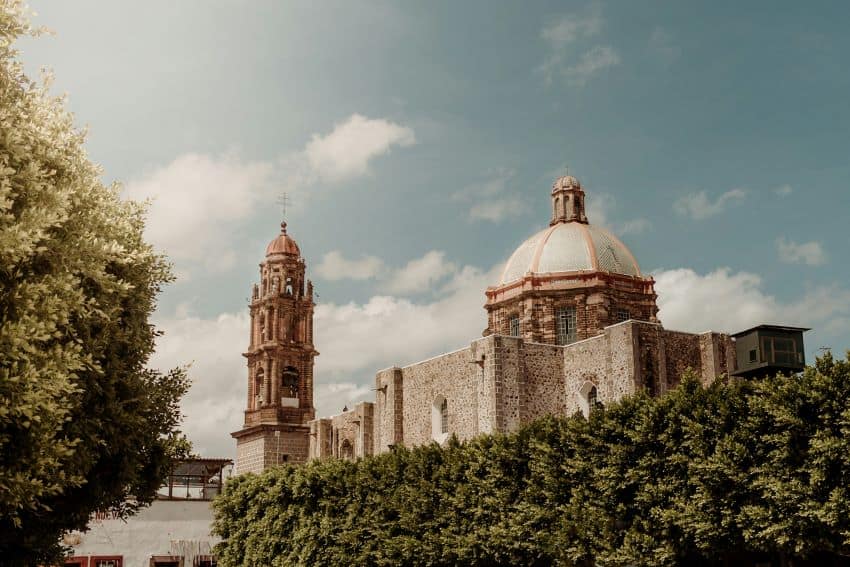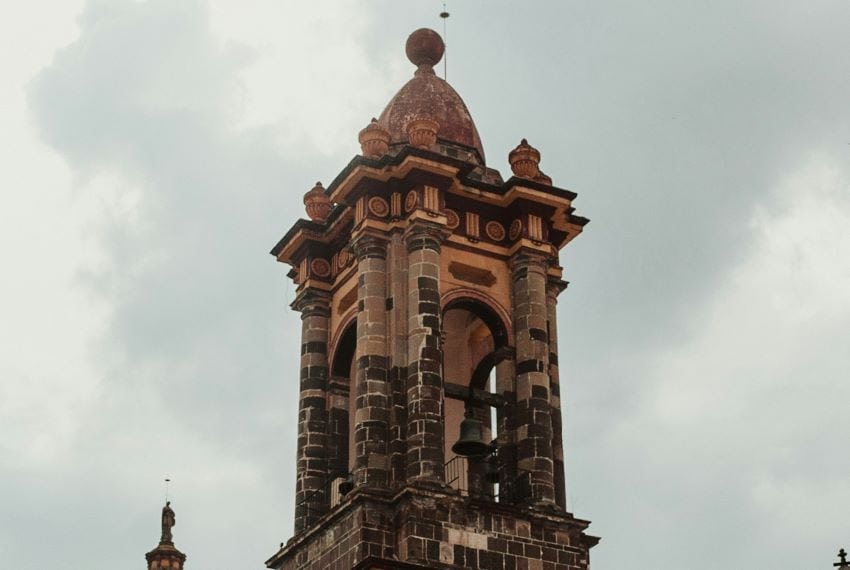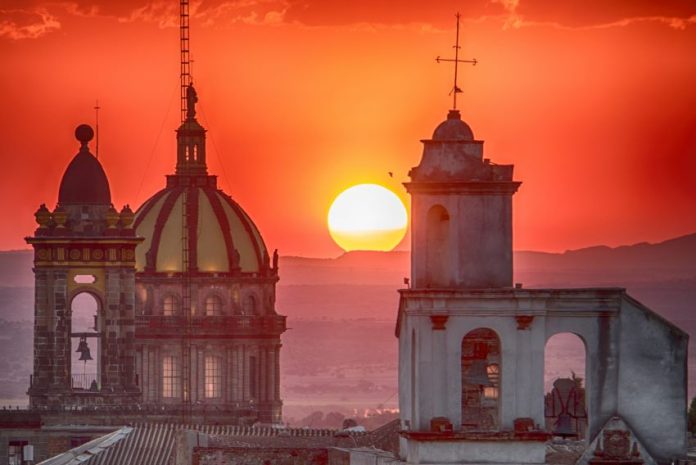When church bells ring in the Bajío region of Mexico, listeners may recall a pivotal moment in the country’s history. It was in the town of Dolores in Guanajuato, only 40 kilometers from San Miguel de Allende, that local priest Miguel Hidalgo ignited the flames of freedom with an act that still reverberates across the nation. In the quiet of the early hours on September 16, 1810, he rang the bells of his church to summon the townspeople in a fervent cry for liberty. The iconic Cry of Dolores galvanized the population to rise against the oppression of Spanish rule and heralded the Mexican War of Independence.
Captivated by the evocative tolling of the church bells that echo through San Miguel de Allende, I set out to unravel the mysteries behind their timing and purpose. My curiosity led me to seek guidance from the people most knowledgeable on the topic: the church staff entrusted with this melodic task.

Like in so many places around the world, church bells play a key role in San Miguel’s religious life, where their primary function is to announce religious services and call worshippers to prayer. This practice keeps the community connected to their faith, reminding everyone, amidst their daily activities, to pause and come together.
While interviewing church staff, I became aware of the distinction between church bells and clocks. Despite their similarity, they emit distinctly different sounds. While clocks sound to mark the passage of time, church bells carry a deeper significance, summoning the community to gather for worship or celebration.
Bells also ring to mark significant moments in life. At the end of the marriage ceremony, they peal joyfully to celebrate the union of the newlyweds. Conversely, at the beginning of a funeral service, the bells toll in a slow and spaced-out tempo, solemnly honoring the departed.
Church bells are not rung in a uniform schedule across all parishes, as each has its own calendar. There are two types of church bells: those rung by pulling on a rope and those that are rotated and made to keep turning to create a melancholic sound, particularly used on somber occasions like the Day of the Dead and Holy Week.

The Parroquia de San Miguel Arcángel, the city’s iconic main church — St. Michael is San Miguel de Allende’s patron saint — follows a precise and reverent bell-ringing schedule to signal its various religious services and events throughout the day. Like other churches, the bells start ringing 30 minutes before mass at 15-minute intervals, marking the countdown to the services held at 7 a.m., 8 a.m., noon and 8 p.m.
At the Templo de la Inmaculada Concepción, commonly known as Las Monjas, Sister Inés kindly agreed to answer my questions. Although the church’s tower holds four bells, she told me, only one is used to call worshippers to mass and is rung by pulling on a rope. Thirty minutes before mass, this bell chimes at 15-minute intervals. Ringing all four bells requires climbing to the tower and is only done on special occasions, such as the Feast of the Immaculate Conception on December 8; the feast of St. Beatrice of Silva, founder of the Order of the Immaculate Conception; and when a new Sister takes her vows. The bell remains silent for the daily morning mass because the priest’s arrival time varies, so it is only used to announce the daily 7 p.m. mass, and the 11:30 a.m. Sunday mass.
At the Parroquia de San Antonio de Padua, I interviewed Amado Rubio, the church’s young sacristan. He explained the bells ring following the same pattern as other churches: three calls at 15-minute intervals for the 8 a.m. and 8 p.m. masses. You can expect to hear loud tolling on and around June 13, the Feast of St. Anthony of Padua, this church’s patron saint. The church’s bells peal to mark this holiday and then again on the following weekend to mark the start of one of San Miguel’s most cherished festivals.
The Desfile de los Locos (Parade of the Crazies) is a lively and cherished tradition celebrated in San Miguel de Allende every year. Participants adorn themselves in elaborate costumes and masks, showcasing a spectrum of creativity from whimsical to humorous. The chimes of the Parroquia de San Antonio’s bells beckon the spirited participants, affectionately dubbed “locos,” to converge at its terrace. From there, they embark on a joyous procession, wildly dancing their way through the winding streets toward the city square known as the Jardín Allende.
As the church bells reverberate, I feel the contrast to the private messaging facilitated by digital devices. Church bells resonate throughout entire neighborhoods, fostering communal engagement and a sense of belonging. With each peal, I am reminded of the enduring legacy of faith and resilience that binds us together, transcending time and space.
Sandra Gancz Kahan is a Mexican writer and translator based in San Miguel de Allende who specializes in mental health and humanitarian aid. She believes in the power of language to foster compassion and understanding across cultures. She can be reached at: sandragancz@gmail.com
